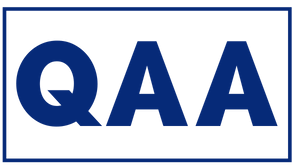Adjustment, Flexibility, Change

2020 has been a year of adjustments, flexibility and change for everyone. We have discovered new talents and gifts within ourselves, friends and family. We have learned new depths of strengths we never knew within ourselves. And, hopefully found who to support us in our weaknesses.
As we personally adjusted to the changes happening around us, how are companies adjusting? What made this change occur more easily?
Solid Foundations
Some companies most likely made the transition and adjustment easily because of one of the two following reasons – existing remote workers and/or the implementation of online learning.
Remote Workers
Prior to 2020, 7 million people in the U.S. were already working remotely. Of U.S. businesses, 82% are using flexible schedules and locations to assist with work-life balance. 90% of employees state that flexibility in their work arrangements “contributes to their morale”. This could explain why the overall morale of forced work from home has seen a decrease in joy from remote work.
Issues with remote staff have been noticed through not only morale, but with technology differences. However, once the infrastructure was in place, all remote employees had the ability to communicate and complete tasks. Another new possible benefit could be more reliance on employee competence and less oversight or management. We could see a growth of leadership and decline in management.
What if your company had ‘essential’ workers? These heroes of our country deserve more recognition than they will ever receive. To be honest, I do not believe there was any amount of preparation that would have allowed for a better foundation or smoother transition. Our teachers, medical and service community have been flexible and working seemingly around the clock. As the guidelines change, these individuals adjust in an attempt to stay safe and healthy while serving the community.
Online Learning
Another consideration is the implementation of online learning. With nearly 1.5 billion students shifting to online learning at some point, most organizations (education and corporations) needed to transition from instructor-led to online learning. Arguably, the best solutions for the transition include the following from eLearning Industry to ensure engagement:
- Gamification – use gaming elements in lessons
- Mobile Learning – use a responsive solution, if an independent app is too expensive
- Adaptive Learning – solutions that adapt based on learners experience, preferences and knowledge level
- Microlearning – short, informative lessons
- Analytics – data analytics of desired learner details
When learners comment about a boring or difficult course, it is not the subject being criticized usually, but the instructor. In the best classes, the professor keeps students engaged with examples, scenarios, etc. The same is true for online learning. We cannot expect to simply put a PowerPoint up and have our students be happy and learn the content.
Tracking Change
Did you have a solid foundation going into 2020? Were you somewhere in the middle? Are you prepared to enter 2021 with a renewed sense of purpose, flexibility and energy?
Do you know what went right and wrong? Why did this occur? What were the strengths and weaknesses?
By using AI to discover past to present data comparisons, bias can be virtually eliminated. Our interactive system merges verbal (i.e. surveys, employee reviews, etc.) and non-verbal (i.e. assessment scores, sales reports, safety numbers, etc.) data. Within the system, searches occur for identified themes in the verbal syntax while fusing data to non-verbal for comparisons. Perhaps more interestingly, organizations can view from the global, group or individual level which more easily allows for the identification of needs and setting of goals.
We have an example dashboard, Learner Analytics – Professor Comparison, available for exploration on the open Tableau site. Although it relates to a higher education setting and not all our capabilities and customization possibilities are displayed, it will provide you with an opportunity to explore
After reviewing the dashboard, feel free to contact us if you have any questions or would like to schedule a demo for your organization.

